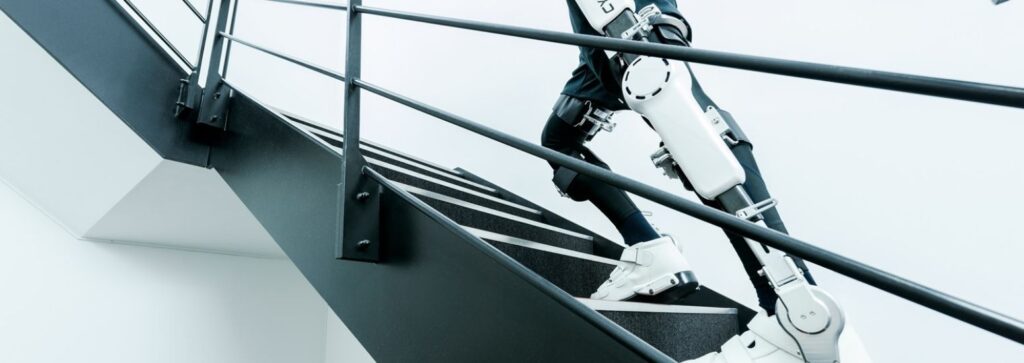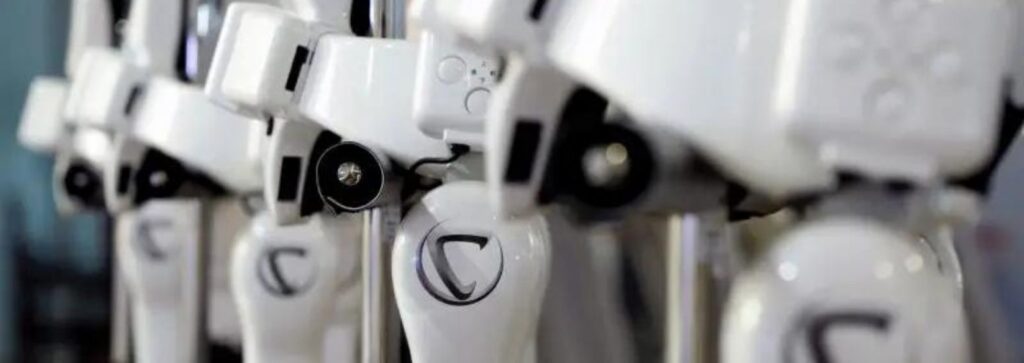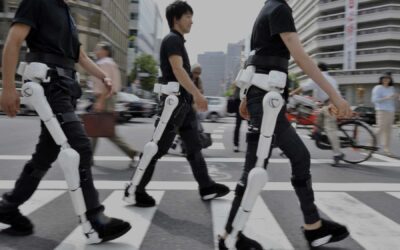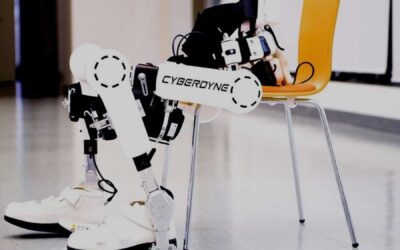Cyberdyne HAL’s [Hybrid Assistive Limb] Lumbar Type Well-being is a technology that could be applied for two roles. The device supports both caregivers and care-receivers. When it’s used by a “caregiver” it reduces the stress applied on the lumbar issues region during care movement and reduces the risk of back injury. When it’s used by “care-receivers”, it could help a person with weak legs to maintain and improve their body function.
Characteristics of Cyberdyne HAL®

The Wearable Cyborg™ HAL® is a neuronal-controlled cyborg used to treat patients with cerebrovascular disease, spinal cord injuries, progressive intractable neuromuscular disease, and other lumbar issues diseases.
The neuronal-controlled HAL® robot suit is used for neuromuscular feedback therapy. The command to execute a movement is transmitted from the brain through the spinal cord to the lumbar issues patient’s muscle which results in the muscle being tensioned to execute the movement. With patients suffering from neurogenic gait disorders, this signal chain is partially impaired, so an independent initiation of movement is only possible to a limited degree. However, the residual neuromuscular impulses of the patient are picked up by sensors and transmitted to the HAL system. The system detects the impulses and provides the lumbar issues patient with the required power assistance to execute the desired movement
Features of The Lumbar Type – Cyberdyne Treatment
- Motion Assist promoting independence:
Voluntary training with HAL is anticipated to maintain and enhance body functions and increase their independence. The compact and lightweight model can widely be introduced to various situations like fun group activities at the facility and thorough care at home visits.

- Reduction of stress on the lower back during care:
Through medical and anatomical analysis and simulation of care activity such as transfer and position change support, a function was developed to further minimise the lumbar burden.
In addition to the “Hybrid Mode” where The Wearable Cyborg™ HAL︎ detects “bioelectrical signal” reflected on the will of body movement transmitted from the brain to the muscle through the nerve system, it is now installed with a new mode called “Cybernics Autonomous Control mode”, which can allow the user to use the device without having to attach the sensors. This is especially useful for caregivers who wanted to use HAL︎ in various situations with minimal effort, as the device can now be worn in under 10 seconds using the new mode.
- Helps Everyone around nursing care:
Reduction of the physical burden of caregivers leads to improvement of the labour environment and prevention of work accidents. Additionally, enhancement of the independence of the care-receiver, such as sit-to-stand action without support reduces the burden of the person, but also significantly reduces the burden of the caregiver. The double role of the new Wearable Cyborg™ HAL︎ will approach solving the issues of an ageing society.
Recovery from Lumbar Issues
Robot Suits make a positive difference in the life of a patient affected with lumbar issues. “This is the world’s first Wearable Cyborg™ HAL® or Robot suit. Advancing exoskeleton robotic technology presents an opportunity for physiotherapists and rehabilitation.
Cyberdyne HAL® technology is suggested to have extensive application prospects in rehabilitation, and professional requirements in this field are high. An important part of this robotic technology research in Cyberdyne treatment is involved with lower extremity/ lumbar rehabilitation.
So, log onto https://rehabmodalities.com/ for a free demo on how to help lumbar issues patients actively use their regained mobility in everyday life after a significant gain in lumbar strength.



